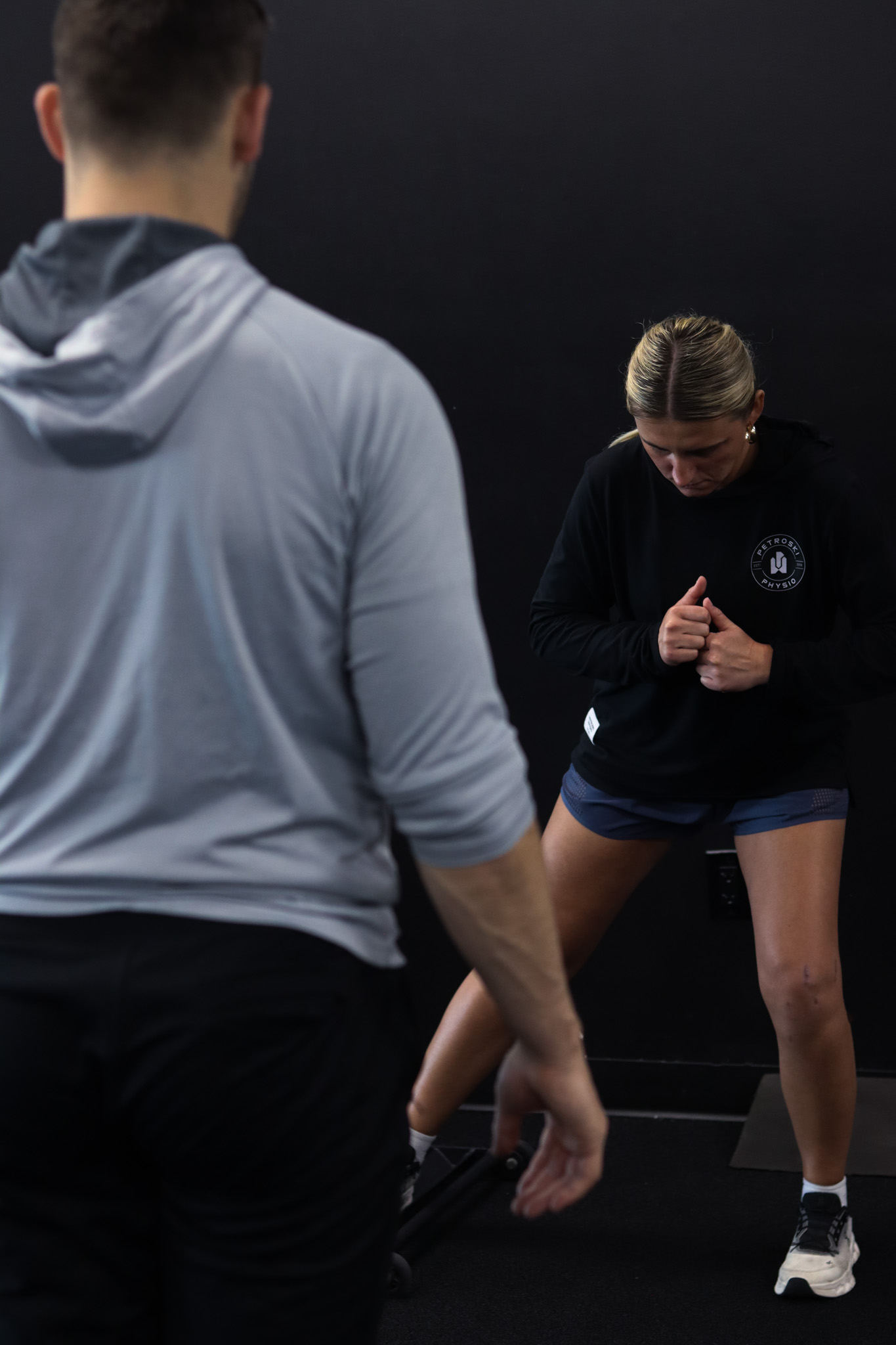If you’ve had an ACL reconstruction and you’re working hard to get back to your sport, you’re probably focusing on strength, range of motion, mobility, and passing your return-to-sport tests. But what if there’s one piece holding everything back that most rehab programs completely miss?
It’s called arthrogenic muscle inhibition (AMI)—a neurological roadblock that can linger long after surgery, even when your knee feels “strong enough.” It’s not about effort. It’s about your brain’s ability to fully activate your muscles, especially your quads.
The Real Problem: Your Nervous System Isn’t Trusting Your Knee Yet
After an ACL injury, your body starts protecting the joint by automatically limiting muscle activation around it, especially your quadriceps. This isn’t just a strength issue. This is a neurological issue. Your brain literally changes the way it sends signals to your muscles because it’s lost trust in the joint.
That’s AMI, it’s sneaky. It creates strength asymmetries, delayed muscle firing, changing movement patterns, and ultimately, can increase your risk of reinjury or longer recovery.
Traditional Rehab Often Misses the Mark
Most rehab protocols focus on muscle strength and passing tests like hop distance or squat symmetry. But many of these tests don’t pick up on lingering neurological deficits. You might pass them and still have AMI quietly affecting how you run, land, and cut.
This gap between “looks good on paper” and “actually ready to compete” is where re-injuries often happen.
At Petroski Physio, We Go Deeper
We’ve redesigned our ACL return-to-sport process to actively target spinal and cortical reactivation, not just muscle strength. Here’s how:
- Neuromuscular Electrical Stimulation (NMES): Used early to override spinal reflex inhibition and drive true quad engagement. You may notice our high-powered state of the art ARPwave that we use in the clinic to achieve world class results.
- Blood Flow Restriction (BFR): Builds strength with low load, while forcing neuromuscular adaptation at a central level.
- Cognitive-Motor Dual Tasks: We combine movement with reaction, decision-making, or visual feedback to rewire the brain’s control of the limb. You’ll notice this when we do reactive drills during out return to sport plans.
- Force plate and gait analysis: To detect compensations you can’t see with the eye.
- Fatigue testing: Because when we are playing sport we are not always 100% fresh.
- Psychological readiness: The tough, open conversations we have at our facility are all part of the process .
Why Individualized Rehab Matters
AMI isn’t the same in every athlete. Some recover fast, some struggle for months. That’s why we personalize every program. If you’re still showing asymmetry, delayed activation, or high-level motor control deficits—we don’t clear you just because you’ve hit 90% strength. We clear you when you’re actually ready.
The Bottom Line
If you’re coming back from an ACL reconstruction, it’s not just about getting stronger — it’s about making sure your brain and body are working together again.
AMI is real. It’s measurable. And it’s trainable. But only if your rehab actually targets it.
That’s exactly what we do at Petroski Physio.
If you want a smarter path back to sport—one that doesn’t just get you cleared, but gets you better—reach out. Let’s rebuild your performance from the inside out.

